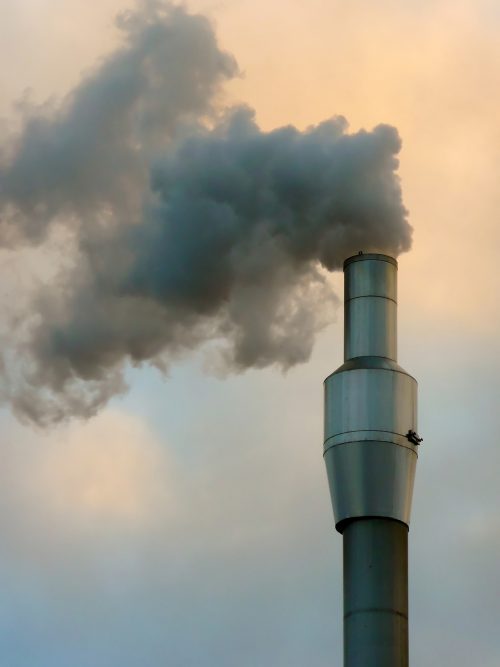We humans are explorers. When we look up at the night starry sky we dream about visiting the worlds outside the Earth. In fact, scientists have very ambitious plans to build colonies on Mars, mine asteroids and, one day, to reach other Solar Systems. After all, there are so many fascinating planets out there.
But today we are going to look not up, but down, at our very own planet Earth. Because it needs our help.
Special Report on Global Warming 1.5 degrees
The recent United Nations’ Intergovernmental Panel On Climate Change SPECIAL REPORT ON GLOBAL WARMING 1.5 DEGREES was a wake-up call for many people. Yes, most of us knew about global warming before. After all, we see the effects of the climate change every time we step outside or turn on the news. But this time we were told that to avoid catastrophic consequences we MUST keep the global warming within the 1.5 degrees above the pre-industrial level. Or else…
So we started asking ourselves: what can we do? Yes, we recycle our plastics, walk more and drive less, shop locally, become vegetarian and switch of lights. But even those 7.5 billion individual efforts is not enough to stop and reverse the damage already caused by human industrial activities of the last few decades.
What causes Global Warming
The average global temperature on our planet is rising mainly thanks to the greenhouse gases released into the atmosphere as a result of human activities. These gases act like a blanket, trapping the heat and preventing the Earth from cooling down. The result? The sea level rises, the ices melt, the weather changes, the number of extreme weather events increase, the deserts expand, the species become extinct. The list goes on.
A number of gases are responsible for the “greenhouse effect”, such as carbon dioxide, water vapor, methane, nitrous oxide and some others. All these gases are produced as a result of natural activities. But we humans managed to add so much to the natural production, that the increased amount of the greenhouse gases currently present in the atmosphere is having a disastrous influence on the Earth’s climate and our well-being.
Carbon Dioxide
The most prevalent of the four major greenhouse contributors is carbon dioxide.
We produce this gas mainly by burning fossil fuels and cutting down trees.
The Special Report tells us that to stay within the 1.5 degrees “budget” we have to dramatically cut our CO2 production and learn how to eliminate what’s being produced from the atmosphere. Unfortunately, it is not easy to reduce the carbon dioxide production. Not with the amount of the cheap fossil fuel available and the still-great need for land. But the good news is, scientists have a solution for how to get rid of the carbon dioxide we make!
Carbon Capture and Storage (CCS)
Just as the name suggest, the idea of this method is to capture the CO2, compress, transport it to a suitable place, inject into porous rock formation and seal tight.
Where from?
Carbon Dioxide can be sucked from the air, that is called direct air capture, or caught right at the point source, such as the fossil fuel power plant, where it’s being produced.
The direct air capture technology is still in its infancy. It requires lots of energy and water and is therefore expensive. One of the few companies in the World that develop this technology is Canadian Carbon Engineering. According to their website, a ton of CO2 captured and compressed to 150 bars will cost around $100-150 USD.
CO2 capture from the point source is an easier and less expensive way to stop the carbon dioxide from entering the atmosphere. Here, different technologies can be used to catch the CO2: pre-combustion capture, i.e. getting rid of carbon dioxide before the combustion is completed, or post-combustion capture, i.e. burning the fuel as normal and then collecting the CO2. Of the two, pre-combustion capture is more efficient and less expensive. The research is currently focused on cutting down the costs of pre-combustion capture with the goal being $30 per ton of CO2.
Where to?
Once collected and compressed, CO2 can be stored in geological formations deep underground. On the contrary to popular belief, ocean is not a great place to store carbon dioxide because ocean acidification is harmful to marine life.
Testing CCS
CCS technology is currently being tested in many places around the Globe, like Norway, USA, Canada, Germany and UK.
For example, in 2018 GFZ German Research Centre for Geosciences in Potsdam completed an ambitious Ketzin CO2 storage project. In the course of five years from 2008 to 2013 the scientists have pumped over 67.000 tons of CO2 underground. For another 5 years after the pumping finished they kept monitoring the storage site for signs of leakage or any other anomalies. Non were detected!
So the results are very promising. Scientist believe that CCS can become a major contributor to the global CO2 elimination efforts. Now it is up to policymakers to make this technology available. Meanwhile, here are the steps you can take to reduce your carbon footprints!
More information on Climate Change
- Watch
- TEDx talk Climate Change: Simple, Serious, Solvable
- How does Carbon Capture&Storage Work? animation
- Check out NASA resources on Climate Change
- Read Special Report on Global Warming 1.5 degrees
- Visit our portable planetarium shows to learn more about Earth and Space
- Contact our inflatable star dome team if you have any questions or comments

